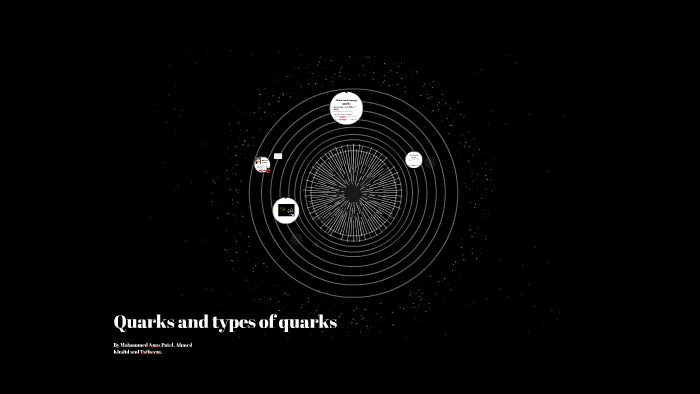Quarks are fundamental constituents of matter, playing an indispensable role in the framework of particle physics. They are elementary particles and a fundamental component of protons and neutrons, which in turn compose the atomic nuclei of all known elements. Quarks are not observed in isolation in nature but combine in unique configurations to form composite particles known as hadrons. Understanding the classification of quarks is pivotal for grasping the complexities of the Standard Model of particle physics. This article delineates the various types of quarks, their intrinsic properties, and their implications in the subatomic realm.
Quarks are categorized into six distinct flavors, each characterized by unique properties—namely, up, down, charm, strange, top, and bottom quarks. Each flavor possesses varying electrical charges and masses, contributing to the diverse behavior of hadrons in which they are embedded. The characteristic features of these six flavors illuminate the harmony and intricacies of the strong force—the fundamental interaction holding atomic nuclei together.
1. Up Quark
The up quark is one of the lightest among the quark flavors, possessing an electric charge of +2/3e. This positivity plays a pivotal role in the formation of protons, as it helps offset the negative charges of the electrons surrounding the nucleus. Up quarks are integral to the stability of atomic structures and are predominantly found in protons, which consist of two up quarks and one down quark. Their mass is approximately 2.3 MeV/c², making them less massive than many subatomic particles, allowing for efficient combinations with other quarks to form various hadronic states.
2. Down Quark
In contrast, the down quark carries an electric charge of -1/3e, which complements the positive charges of up quarks in protons. Together, these quarks engender the positive charge characteristic of protons. The down quark’s mass is slightly higher than that of the up quark, at approximately 4.8 MeV/c². Down quarks are found in both protons and neutrons—neutrons consist of one up quark and two down quarks. The interplay between up and down quarks underpins the stability and properties of baryons, which are particles composed of three quarks.
3. Charm Quark
The charm quark, with a charge of +2/3e, represents a higher mass threshold in the quark spectrum, with a mass around 1.27 GeV/c². Discovered in the early 1970s, charm quarks introduce the concept of charm flavor and add richness to the color charge quantum property of quarks. While not as prevalent as up or down quarks, they are key components in particles like the D meson. The charm quark exhibits fascinating interactions and decays, which helps physicists explore aspects of CP violation—an important phenomenon indicating potential differences in the behavior of matter and antimatter.
4. Strange Quark
With a charge of -1/3e, the strange quark contributes to the unique categorization of certain mesons and baryons within the realm of particle physics. Its mass, approximately 95 MeV/c², exemplifies a transition between lighter and heavier quarks. The presence of strange quarks hints at the existence of strange matter—a hypothesized form of quark matter that could exist under extreme conditions. Particles containing strange quarks, such as kaons and hyperons, reveal profound insights into syndromes of symmetry breaking in the strong interaction.
5. Top Quark
The top quark stands as the heaviest quark flavor, wielding a staggering mass of about 173 GeV/c², which is critical in understanding electroweak symmetry breaking. Exhibiting a charge of +2/3e, the top quark has a fleeting existence; it decays so rapidly that it has limited interaction with other particles before it disintegrates. Its discovery at the Fermilab Tevatron collider in 1995 provided crucial validation for many theoretical frameworks, including the Higgs mechanism, underscoring the importance of mass in the universe.
6. Bottom Quark
The bottom quark, or beauty quark, carries a charge of -1/3e and has a mass of approximately 4.18 GeV/c². Its significance emanates from the role it plays in the generation of B mesons, complex particles that decay into lighter particles, thus opening avenues of exploration into the behaviors and paradoxes of flavor-changing processes. The bottom quark’s interactions serve as a cornerstone for our understanding of CP violation and matter-antimatter asymmetry, subjects which are pivotal in discerning why the universe is primarily composed of matter rather than antimatter.
Conclusion
In summary, the diverse categories of quarks present a rich tapestry of interactions and behaviors underlying the fundamental structure of matter. The up, down, charm, strange, bottom, and top quarks each contribute uniquely to the composite nature of protons and neutrons, thereby influencing atomic stability and the forces governing subatomic interactions. Through ongoing research and experimentation, physicists continue to unravel the enigmatic properties of quarks, offering a deeper understanding of the fundamental forces that shape the universe. As experimental techniques progress and theoretical models become more refined, the study of quarks remains at the forefront of modern physics, bridging the realms of the known and unknown.












